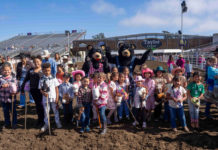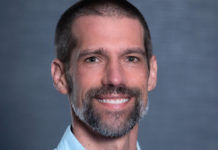CENTRAL COAST — A group of the Peregrine Fund’s California condors will soon be unfurling their nine-and-a-half-foot wings to soar the skies of central California, but first they have to get from the World Center for Birds of Prey in Boise, Idaho, all the way to central California, where the National Park Service and the Ventana Wildlife Society will release the condors from their respective sites at Pinnacles National Park and in Big Sur.
This year, they’ve got a little help from their friends at LightHawk.
LightHawk uses the power of flight to realize conservation outcomes. This year they are doing just that for the critically endangered California condor recovery efforts.
Early in the morning on Sept. 23, the Peregrine Fund was busy. Condor propagation manager Marti Jenkins and the propagation team members began the delicate process of catching each of the nine condors.
“It is hard work preparing the condors for the trip, but we want to ensure their safety throughout the process,” Jenkins said.
Once the birds are safely inside the kennels, the Peregrine Fund’s condor propagation team will drive them to the planes. The preparation is complicated with a lot of factors to address.
“We are so grateful to the volunteer pilots at LightHawk, who donate their time and cost of fuel to help these endangered species. By carefully arranging the best locations and times to meet the pilots to providing tarps to lay under the kennels to protect the interior of the planes we hope to make these flights as stress-free as possible for the condors and the volunteer pilots,” Jenkins said.
LightHawk is planning to meet the condors with seven planes to transfer all nine condors.
Christine Steele, western program coordinator at LightHawk, said, “This is going to be a big operation, but we are so happy to have the chance to help with the recovery of this critically endangered and iconic species. We’ve worked with the Peregrine Fund previously on their aplomado falcon and orange-breasted falcon projects, so we are excited to be partnering again to conserve endangered raptors.”
Once the condors have completed their journey, they will be happily received by Rachel Wolstenholme, condor program manager for Pinnacles National Park, and Joe Burnett, senior wildlife biologist and Big Sur condor recovery program coordinator for Ventana Wildlife Society.
“We are ready for this new group of birds to join our central California flock. I’m looking forward to watching them take their first flight in the wild,” Wolstenholme said.
The journey for this group of birds started almost a year and a half ago when the adult condors in the Peregrine Fund’s breeding program patiently watched as their new chick slowly hatched out of an egg. The chicks started out weighing just a few ounces, but once the parents were finished nurturing them, they weighed as much as 20 pounds.
“The journey for the entire species started in the 1960s when biologists noted they were in serious decline,” Wolstenholme explained. “By the late 1980s, there were only 22 California condors left in the world. It was scary to think that this incredible species, which has soared over our landscape since the Pleistocene, could go extinct on our watch.”
Thankfully, because of the efforts of all of the numerous partners in the condor recovery program, there are now nearly 300 California condors flying free in California, Mexico, Utah and Arizona.
The Peregrine Fund’s condor field and conservation director, Chris Parish, and his team of biologists manage the Arizona and southern Utah population of birds.
“Because of the recovery partners’ work studying this species, we now know that their recovery without the breeding programs is unlikely. Free-flying condors are ingesting lead that they’re encountering on the landscape,” Parish said.
When scavenging birds and mammals eat the remains of carcasses shot with lead ammunition, tiny fragments of the heavy metal can be ingested and then absorbed into their bloodstream, often causing long-term side effects and even death.
Because of the North American Non-Lead Partnership (NANP), Jenkins has hope: “We can keep producing condors to send out into the wild, but without increasing the use of non-lead ammo, it’s just a temporary solution. The NANP and the hunters and anglers who choose to switch to non-lead ammunition are the solution. Once the threat of lead is reduced, the likelihood of recovery will be a possibility.”














